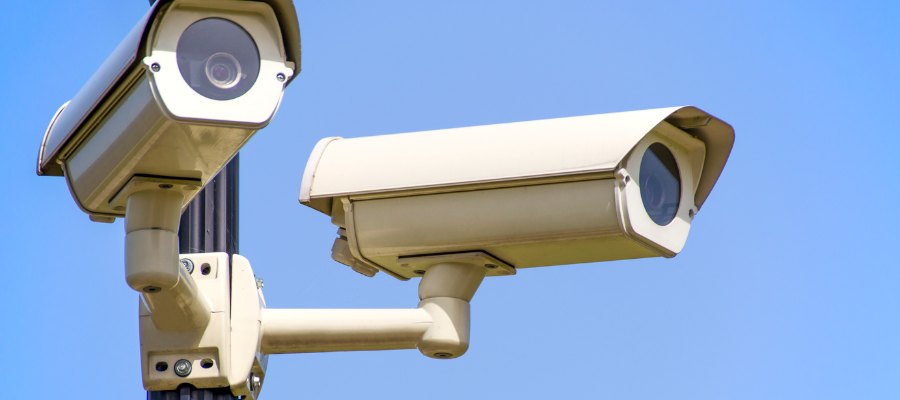The Importance of Effective Security Camera Placement
- August 5, 2024
- Posted by: BAMSS
- Category: Business Security Systems, CCTV Systems, Home Security Systems, IP Cameras Brisbane

Security cameras are a crucial component of any comprehensive security system. Their effectiveness in deterring crime and providing valuable evidence hinges on camera quality and effective security camera placement.
Although the primary purpose of security cameras is to monitor and record activity within a designated area, even the best cameras can be rendered ineffective if not placed correctly. Proper placement ensures that cameras capture clear, actionable footage and cover all critical areas without blind spots. This is vital for both deterring potential intruders and providing evidence in the event of a security breach.
At Brisbane Alarm Monitoring Security Services (BAMSS), we regularly install security cameras and video monitoring and understand that strategic placement of security cameras is essential for maximising their utility.
In this blog post, we’ll delve into the importance of effective security camera placement and offer practical tips on how to position your cameras for optimal coverage and protection.
Why Placement Matters
Security cameras work by capturing video footage of the areas they monitor. They can record continuously, on a schedule, or when triggered by motion. The footage is either stored locally on a DVR/NVR (Digital/Network Video Recorder) or sent to cloud storage. High-resolution cameras can capture detailed images, which are crucial for identifying individuals and incidents. Cameras with night vision or infrared capabilities can monitor areas in low-light conditions, ensuring round-the-clock security.
Here’s why strategic placement is vital:
- Proper placement of security cameras maximises their deterrent effect. Visible cameras can discourage potential intruders from attempting to breach security, as they are aware that their actions are being recorded. Strategically placed cameras can cover entry points, high-traffic areas, and vulnerable spots, ensuring comprehensive surveillance.
- Cameras placed at higher elevations can capture wider areas and provide a better overview of the premises. However, placing them too high can reduce the level of detail captured. Conversely, cameras placed at eye level can capture detailed images of individuals but may cover smaller areas. Balancing the height and angle of cameras is essential for optimal coverage.
- Integrating security cameras with other security measures, such as alarms and motion sensors, enhances their effectiveness. For example, motion-activated cameras can start recording when a sensor is triggered, ensuring that no important events are missed. This integration also allows for real-time alerts, enabling prompt responses to security incidents.
Strategic placement ensures that cameras capture key areas without violating privacy regulations. For instance, cameras should not be placed in areas where there is an expectation of privacy, such as restrooms or private offices. Proper placement helps balance security needs with privacy concerns, ensuring compliance with legal requirements.
Eight Considerations for Effective Security Camera Placement
1. Covering Entry and Exit Points
One of the most critical aspects of security camera placement is covering all entry and exit points. Doors, windows, and other access points should be monitored to capture anyone entering or leaving the premises. Position cameras at an angle that captures the face and full body of individuals. This footage can be invaluable for identifying intruders and verifying the identities of those entering and exiting the property.
2. Monitoring High-Traffic Areas
High-traffic areas such as lobbies, hallways, and reception areas should be under constant surveillance. These locations are often where people congregate and where important interactions take place. By monitoring these areas, you can keep an eye on the movement of people within your premises and ensure that no suspicious activities go unnoticed.
3. Securing Vulnerable Areas
Every property has certain areas that are more vulnerable to intrusion than others. These might include back alleys, poorly lit corners, and secluded areas. Identifying these vulnerable spots and positioning cameras to cover them is crucial for preventing unauthorised access and detecting potential threats early.
4. Utilising Multiple Angles
Relying on a single camera angle can create blind spots and limit the effectiveness of your surveillance system. Instead, use multiple cameras to cover the same area from different angles. This not only eliminates blind spots but also provides a more comprehensive view of the monitored area. For example, positioning cameras at opposite corners of a room ensures that the entire space is covered.
5. Balancing Visibility and Discreteness
There is a balance to strike between making cameras visible and keeping them discreet. Visible cameras act as a deterrent to potential intruders, as they are aware they are being watched. However, discreet cameras can capture activity without alerting the subject, which can be useful in cases where you need to monitor without being noticed. Consider using a combination of both visible and hidden cameras to achieve the desired effect.
6. Considering Environmental Factors
Environmental factors such as lighting, weather conditions, and potential obstructions must be taken into account when positioning security cameras. Ensure that cameras are placed in well-lit areas or equipped with night vision capabilities for effective monitoring in low-light conditions. Additionally, protect outdoor cameras from harsh weather conditions by using weatherproof housings and positioning them under eaves or other protective structures.
7. Integrating with Other Security Measures
For maximum security, integrate your cameras with other security measures such as alarms, access control systems, and motion detectors. Effective locks, barriers, gates, and more are important in different scenarios to ensure that intruders cannot enter a premises. This includes training those on the premises, whether it’s commercial or personal, so that everyone understands how to use security systems.
8. Regular Maintenance and Adjustments
Regular maintenance is crucial to ensure that your security cameras continue to function effectively. Periodically check for any obstructions, clean the lenses, and ensure that all connections are secure. Additionally, as your property and security needs evolve, you may need to adjust the placement of your cameras. Regularly review your security footage to identify any gaps in coverage and make necessary adjustments.
Effective placement of security cameras is a fundamental aspect of any security strategy. By carefully considering entry and exit points, high-traffic areas, vulnerable spots, and environmental factors, you can maximise the effectiveness of your surveillance system. At BAMSS, we offer expert advice and professional installation services to ensure that your security cameras are optimally placed for comprehensive coverage and protection.
Brisbane Alarm Monitoring Security Services provides security camera installation, camera surveillance systems, and a range of business security solutions including facial recognition access and security system installation in Brisbane, the Sunshine Coast, Gold Coast, Logan, Redlands and Brisbane Bayside.
Contact us today to learn more about how we can help you enhance the security of your premises with strategically positioned cameras.

